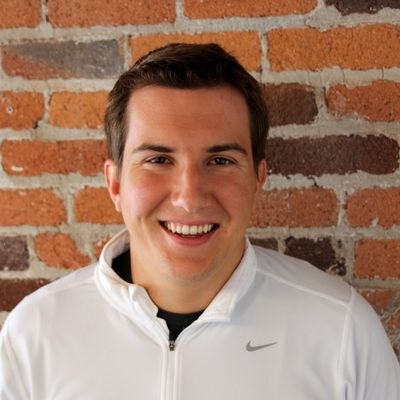
Several years ago, Lucas Duplan was a relatively normal teenager. He grew up in Orinda, California, worked his way into Stanford, pledged Sigma Nu, and became one of hundreds of computer-science majors on campus. But after a study-abroad semester in London, Duplan got an idea for a business and set his sights on making it happen. And yesterday, after just a few years of hard work, that vision culminated in a $25 million jackpot, apparently the “largest seed funding in Silicon Valley history.”
Many 22-year-olds have struck it rich in tech, but rarely does one assemble the pieces of a start-up success story so methodically and quickly. The $25 million round Clinkle announced yesterday represented a near-perfect achievement of social and professional climbing. And it’s all thanks to Stanford.
As Ken Auletta noted in a 2012 New Yorker article called “Get Rich U.,” Stanford’s computer-science department has become a sort of vocational school for the tech world. Stanford president John Hennessy is a Google director and a longtime tech investor. The Coupa Cafe, a coffee shop on campus, is perpetually jammed with venture capitalists meeting with student entrepreneurs. And every year, Facebook, Google, Microsoft, and other tech giants line up to woo Stanford grads to their ranks.
Clinkle has been an end-to-end Stanford production. After his semester in London, Duplan got early help from Mehran Sahami, the professor who teaches CS106A, Stanford’s intro “programming methodology” course. (Sahrami eventually became an investor in Clinkle, as did president Hennessy.) He then recruited a group of more than a dozen fellow Stanford students to join him in building Clinkle. The students took leave from school while they built their stealth-mode start-up, and Dupla began meeting with many of the Valley’s premiere investors to convince them it was worth their attention. Another group of Stanford students went to work as beta testers.
Before Clinkle, Duplan had never built a successful start-up in his life. But his Stanford connections gave him a fast track to the inner circle of tech. In the end, Clinkle wound up taking his $25 million haul from a star-studded group that included ubiquitous VC firm Andreessen Horowitz, Paypal billionaire Peter Thiel, Accel Partners, Intel, Intuit, and many more. An investor list like that would be wild for any start-up. For one with a first-time, 22-year-old founder, it was almost unprecedented. (Even Mark Zuckerberg made do with a piddling $500,000 seed round for Facebook.)
Duplan has been purposefully vague about what Clinkle actually is, as have his investors. But some details have leaked out. Yesterday, TechCrunch contributor Billy Gallagher (who, naturally, is also Stanford’s current student-body co-president) posted a two-paragraph description of the technology underlying Clinkle:
Both [a beta tester] and the former employee independently say the app uses high frequency sound to communicate between devices.
The former employee said he wasn’t told anything about the tech while he worked at Clinkle, but had heard that the app uses the microphone and speakers of smartphones to emit a certain frequency; he said vendors wouldn’t have to add any hardware because any computer or iPad has speakers and microphones. As for older cash registers, he believes Clinkle would try to somehow incentivize the seller to upgrade to something that can emit and receive high frequency sound.
(A few hours later, the paragraphs had been deleted from TechCrunch’s story, presumably because Clinkle or its investors requested that it be removed. I e-mailed Gallagher to ask about the deletion, and he replied: “I was given information from the two sources that is completely accurate at its most basic level; however, after talking more in-depth with Lucas today, I’ve learned that the tech is much more complicated. I decided to remove those two paragraphs to avoid misleading readers, and I’m digging more to get a more complete sense of exactly what tech they’ve developed.“)
In any case, it appears that Clinkle will use some sort of sound-based technology to allow users to shuffle money between phones. That might not be a $25 million idea on its own. But combined with Duplan’s Stanford pedigree, his official support from the university’s well-connected president, and the presence of a bunch of hotshot student engineers, it was enough to make celebrity investors throw millions of dollars at him.
Clinkle doesn’t even technically exist yet, and already it’s an archetypal tech success story, the kind that creates paper wealth out of thin air and makes other tech founders green with envy. And it shows the power Stanford still has within the insular, incestuous world of tech. As a Stanford student, you can get your start-up idea, hire engineers and designers, get millions of dollars in venture-capital funding before your launch, and be written up in TechCrunch, all without leaving the confines of campus. The entanglement between Stanford and Silicon Valley is hardly unproblematic, on an ideological level, but it’s worked out great for Duplan. No wonder he looks so happy in the graduation photo he posted to Facebook earlier this month.





























